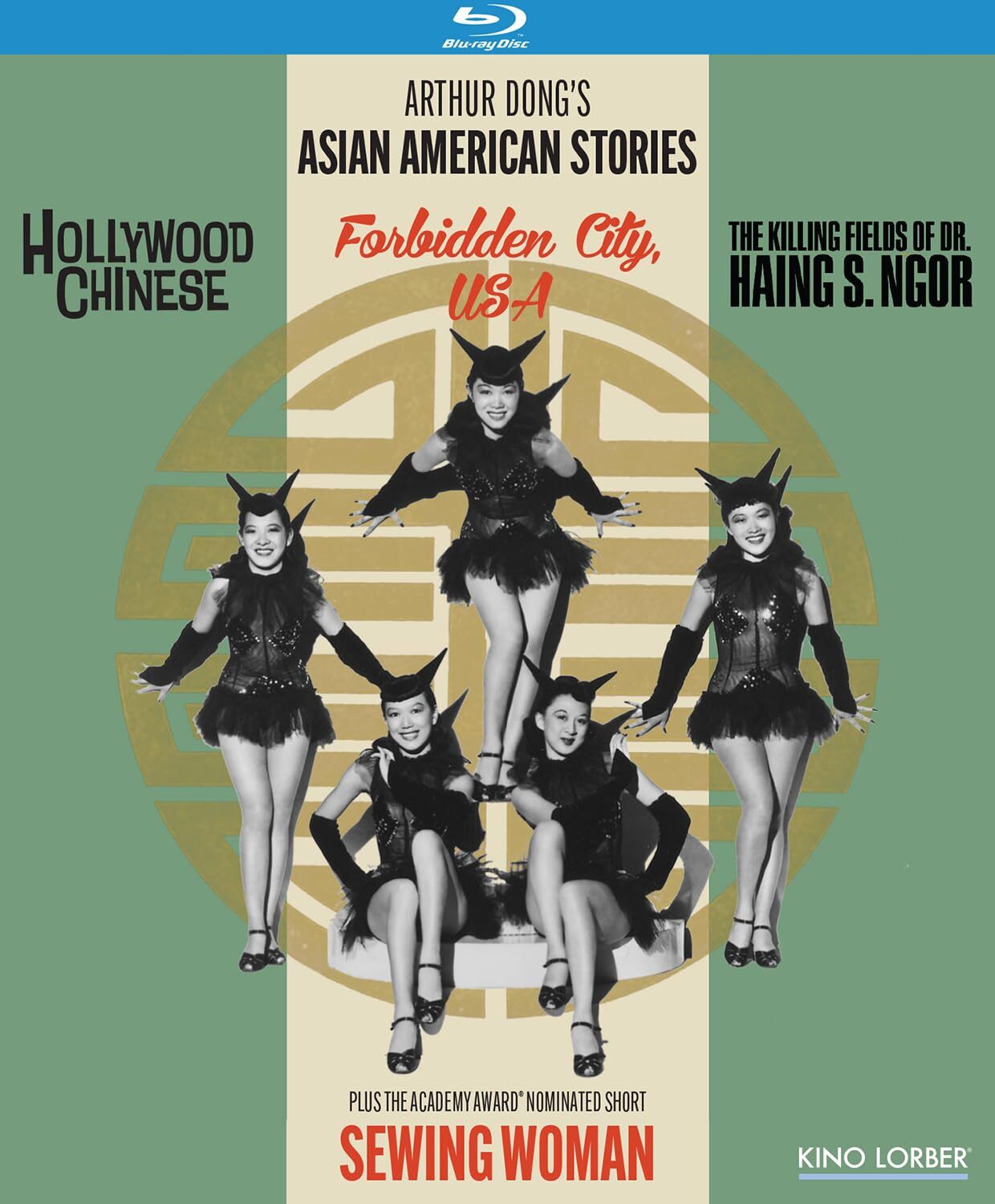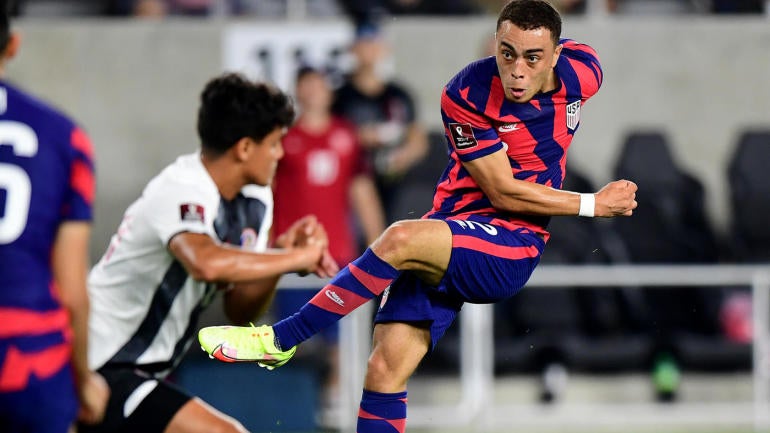Representation Vs. Reality: Examining Asian And Asian American Stories In Media

Table of Contents
Historical Stereotypes and Their Lingering Impact
For decades, Asian and Asian American characters in media have been subjected to harmful and limiting stereotypes that continue to impact perceptions today. These stereotypes not only misrepresent the diversity within the community but also contribute to real-world discrimination.
The "Perpetual Foreigner" Trope
The "perpetual foreigner" trope portrays Asian and Asian American characters as inherently foreign, regardless of their citizenship or how long they've lived in the country. This stereotype limits their ability to be seen as fully American and often reduces them to comedic relief or easily dismissed outsiders.
- Examples: The portrayal of Asian characters with heavily accented English, regardless of their fluency, in numerous films and television shows. The constant questioning of their "true" origins or loyalty to the US.
- Impact: This stereotype fosters xenophobia and reinforces the idea that Asian Americans are not truly "American." It perpetuates a sense of otherness and limits opportunities for these individuals.
- Miscasting and Yellowface: The use of non-Asian actors in "yellowface" makeup further exacerbates the problem, actively reinforcing these stereotypes instead of striving for authentic representation.
The Model Minority Myth and its Harmful Consequences
The "model minority" myth paints Asian Americans as uniformly successful, hardworking, and docile, ignoring the vast struggles and disparities within the community. This myth is not only inaccurate but also harmful.
- Examples: Media consistently portraying Asian Americans as high-achieving students or professionals without acknowledging the significant challenges faced by many within the community, particularly those from lower socioeconomic backgrounds or marginalized communities.
- Impact: This myth creates unrealistic expectations and pressures individuals within the Asian American community. It also fuels inter-ethnic tensions by pitting Asian Americans against other minority groups vying for resources and social justice. It ignores the struggles of many Asian American individuals and families facing poverty, discrimination, and other societal issues.
- Internal Divisions: This stereotype also ignores the immense diversity within the Asian American community, causing internal divisions and hindering collective action toward shared goals.
Hypersexualization and Fetishization
Asian women are often hypersexualized and fetishized in media, while Asian men are frequently depicted as emasculated or asexual. These harmful stereotypes contribute to a culture of objectification and discrimination.
- Examples: The portrayal of Asian women as submissive, exotic "dragon ladies," or hypersexualized objects in film and advertising. The representation of Asian men as nerdy, asexual, or effeminate.
- Impact: These depictions fuel real-world harassment, objectification, and discrimination against Asian women and men. They contribute to harmful fetishization and limit the potential for complex, nuanced representations of Asian characters in media.
- Consequences: These harmful stereotypes lead to real-life consequences such as sexual assault, discrimination in employment, and the internalization of negative self-image by individuals.
The Rise of Authentic Representation and its Challenges
Despite the historical baggage, there's a growing movement toward more authentic and diverse representation of Asian and Asian American stories in media. However, significant challenges remain.
Increased Visibility of Asian and Asian American Creators
The increased presence of Asian and Asian American creators behind the camera is leading to more nuanced and complex storytelling.
- Examples: The success of shows like "Fresh Off the Boat," "Master of None," and "Everything Everywhere All at Once" demonstrate the impact of having Asian American voices at the forefront of creation.
- Impact: These shows offer authentic portrayals of Asian American experiences, exploring the intricacies of culture, family, and identity. They present diverse characters that defy stereotypes and offer complex narratives that resonate with viewers.
- Importance of Diverse Teams: This includes having diverse writers, directors, producers, and actors. A diverse creative team ensures a richer and more authentic portrayal of the Asian American experience.
The Complexities of "Authenticity"
Defining "authenticity" in representation is complex. It's crucial to move beyond tokenism and ensure representation reflects the multifaceted experiences within the Asian American community.
- Dangers of Tokenism: Including a single Asian character to fulfill a diversity quota without meaningful development or storyline integration is ineffective.
- Importance of Intersectionality: Representation must consider the intersecting identities of race, gender, class, sexuality, and other factors to capture the richness of the Asian American experience.
- Nuance and Avoiding Generalizations: It's essential to avoid broad generalizations about Asian cultures and instead portray the unique experiences of individuals within the community.
Challenges Remaining in Achieving Equitable Representation
Despite progress, significant challenges remain in achieving truly equitable representation.
- Statistics on Representation: Statistics consistently show underrepresentation of Asian and Asian American actors, particularly in leading roles.
- Lack of Diversity in Leadership: There's a persistent lack of diversity in leadership positions within the entertainment industry, limiting opportunities for Asian and Asian American creators.
- Financial Barriers: Asian American creators often face financial barriers and lack of access to resources, hindering their ability to produce and distribute their stories.
The Impact of Media Representation on Society
Media representations significantly shape public perception and understanding of Asian and Asian Americans.
The Influence of Media on Public Perception
Media portrayals directly impact public attitudes and understanding of Asian Americans.
- Examples: Negative stereotypes in media have fueled real-world prejudice and discrimination against Asian Americans.
- Link between Media and Discrimination: Studies show a strong correlation between media representations and incidents of racism and discrimination.
- Importance of Positive Representation: Positive and accurate representation in media is crucial in combating prejudice and promoting acceptance.
The Role of Media in Promoting Understanding and Empathy
Media has the potential to foster cross-cultural understanding and empathy.
- Examples: Films and shows that challenge stereotypes and offer nuanced portrayals of Asian American experiences can promote dialogue and understanding.
- Role of Media in Raising Awareness: Media can raise awareness about the challenges and triumphs of the Asian American community.
- Impact on Social Cohesion: Accurate and positive representation contributes to social cohesion and reduces prejudice.
Conclusion
The journey toward authentic representation of Asian and Asian American stories in media is ongoing. While progress is being made, a significant gap remains between the reality of this diverse community and how it's often portrayed. Historical stereotypes continue to linger, while the challenges of achieving truly equitable representation persist. However, the increased visibility of Asian and Asian American creators offers hope for a more inclusive and representative future. Demand better representation in the media by supporting films, TV shows, and other media that authentically portray the rich diversity of Asian and Asian American experiences. Let's continue the conversation on Representation vs. Reality: Asian and Asian American Stories in Media and work towards a more equitable future.

Featured Posts
-
 Shane Lowrys Joy For Rory Mc Ilroy A Friends Unwavering Support
May 12, 2025
Shane Lowrys Joy For Rory Mc Ilroy A Friends Unwavering Support
May 12, 2025 -
 Usmnt Weekend Recap Dest Returns Pulisic Shines
May 12, 2025
Usmnt Weekend Recap Dest Returns Pulisic Shines
May 12, 2025 -
 Nine Candidates One Papacy The Selection Process Explained
May 12, 2025
Nine Candidates One Papacy The Selection Process Explained
May 12, 2025 -
 Who Is Manon Fiorot A Deep Dive Into The French Ufc Fighter
May 12, 2025
Who Is Manon Fiorot A Deep Dive Into The French Ufc Fighter
May 12, 2025 -
 Chantal Ladesou Ou Elle Se Ressource En Famille
May 12, 2025
Chantal Ladesou Ou Elle Se Ressource En Famille
May 12, 2025
Latest Posts
-
 High Stock Valuations And Investor Concerns A Bof A Perspective
May 12, 2025
High Stock Valuations And Investor Concerns A Bof A Perspective
May 12, 2025 -
 Understanding High Stock Market Valuations Bof As Analysis For Investors
May 12, 2025
Understanding High Stock Market Valuations Bof As Analysis For Investors
May 12, 2025 -
 Analyzing Trumps Stance On Cheap Oil And Its Effect On The American Energy Industry
May 12, 2025
Analyzing Trumps Stance On Cheap Oil And Its Effect On The American Energy Industry
May 12, 2025 -
 The Paradox Of Trumps Cheap Oil Policy Boosting Prices While Praising Producers
May 12, 2025
The Paradox Of Trumps Cheap Oil Policy Boosting Prices While Praising Producers
May 12, 2025 -
 Trumps Cheap Oil Agenda Conflicts And Compromises
May 12, 2025
Trumps Cheap Oil Agenda Conflicts And Compromises
May 12, 2025
